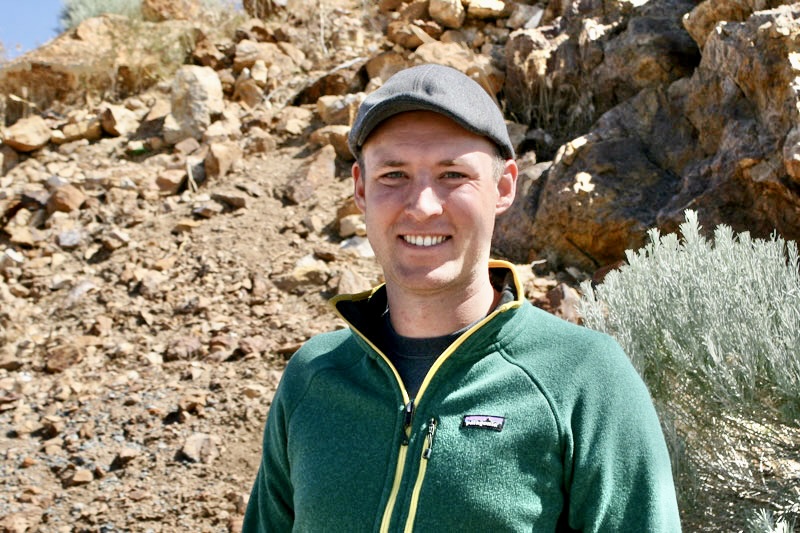Some information may be outdated.
While climate change has been a hot topic of conversation in recent years, people living in the Southwest have dealt with climate transitions in the region for tens of thousands of years. This month, Science Moab talked with Kyle Bocinsky, a paleoclimate reconstruction specialist, about how farmers in the past responded to climate change and negotiated the social implications of it. Through our conversation, we explore the adaptation techniques humans used in the past, and how we can use those same techniques to learn about our future.
Science Moab: When you’re talking about Paleoclimate and human occupation over really long periods of time in the Southwest, what does that look like?
Bocinsky: We can say that Moab, for example, was experiencing a really extreme drought in this particular year and even in a particular season within that year using the tree ring record. There are very few places around the world where we can get to that level of resolution without having documentary evidence. In the Southwest, we are privileged to be able to do that for at least the last 2,000 years, as long as people have been doing corn agriculture in the Four Corners region. So that presents us with a lot of opportunities because when we’re talking about change, we can talk about how individual events might have impacted people, how drought or flooding events could have impacted agriculture in a particular setting. We can also look at longer-term changes, like, did people see an increase in aridity over a period of time? We’re able to look at how people respond to those transitions between climatic regimes.
Science Moab: We have this incredible record of past weather because of tree rings. What kind of tools are you using as an archaeologist to then be able to say something about how humans respond to those shifts in weather?
Bocinsky: In the archaeological record it is possible to see shifts in patterns based on human events, such as people migrating out of the Four Corners region for one, or the collapse of the Chacoan system in the mid-1100s. We also have the privilege in the Southwest of being able to work closely with descendant communities whose ancestors experienced a lot of these changes. When we’re talking about a place like the Hopi mesas, we’re talking about 1,300 years of persistent occupation of those mesas where people have been growing corn for 1,300 years. They’ve gone through many of these big climatic shifts that we’re able to document in the dendro-climatological record and they tell us about some of the changes that they’ve seen. They may talk about how different villages were impacted by droughts in the past, they may talk about how climate events stimulated different aspects of their culture. This tells us something about how they adapted and how they changed during the past. So we’re able to see these stories in the archaeological record through excavation and through the research that’s been done over the last century. We’re also really able to see them through our conversations with the descendants of those people who lived at those times.
Science Moab: How did people use corn specifically to adapt to changing climates?
Bocinsky: One important part is the development and maintenance of what we call landraces. These are locally adapted varieties of corn or any crop that is adapted to not only a local environment but also adapted to a specific form of agriculture or cultivation. So it’s adapted to the people and the people are adapted to it. What we see in Hopi corn farming, and in Pueblo agriculture, is a system of agriculture: a combination of the corn and the people that were able to very rapidly adjust to new climatological situations and to move. That migration primed the corn and the people to be able to adapt to climate changes and keep growing corn throughout history. So we see this system in which people and corn learn how to adapt. One of the keys to the success of the Hopi people has been their maintenance of diversity. That is one thing that we certainly do not see in contemporary agriculture, especially maize agriculture around the world. You don’t see that tradition of local seeds saving that tradition of the creation of land races, and yet the maintenance of diversity within seed stock. And that’s a challenge that we have.
Science Moab: What hope do you see for the Southwest now?
Bocinsky: We’re definitely seeing aridification in the southwestern U.S. of a scale that humans have likely not experienced in the past. Yet, corn cultures in the southwestern U.S. have flourished in a really wide diversity of environments. Take, for example, the fact that we’ve got people growing corn in the southwestern U.S. up on the Hopi mesas, 6,000 to 8,000 feet in elevation, and people growing corn down in Tucson, and in the Phoenix basin, where it’s much hotter. We have examples from communities across this environmental spectrum flourishing and they are doing so by developing very specific place-based agricultural techniques. The hope that I have right now is that we’re seeing a blossoming of knowledge exchange between communities that have developed food sovereignty, that have persisted through history. Through that exchange, I think we’re seeing innovation that is going to help people persist into the future.
Science Moab is a nonprofit dedicated to engaging community members and visitors with the science happening in Southeast Utah and the Colorado Plateau. To learn more and listen to the rest of this interview, visit www.sciencemoab.org/radio.
Appreciate the coverage? Help keep local news alive.
Chip in to support the Moab Sun News.





